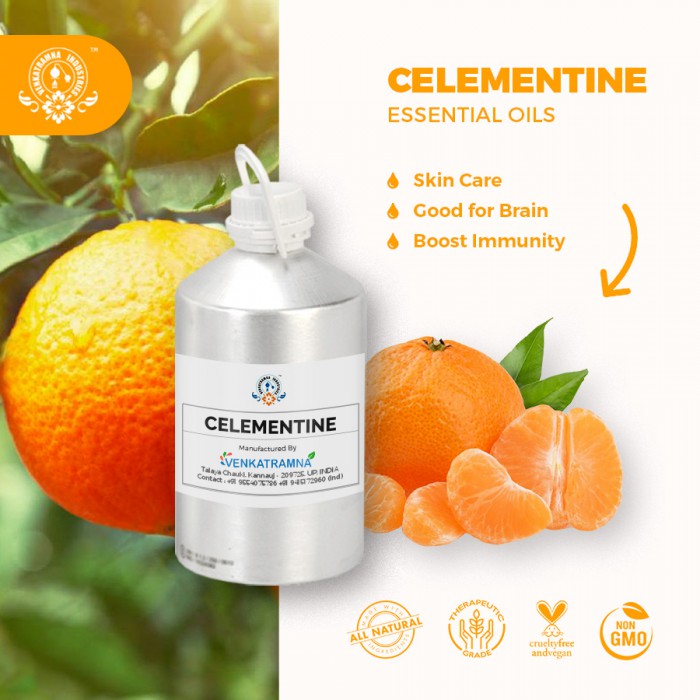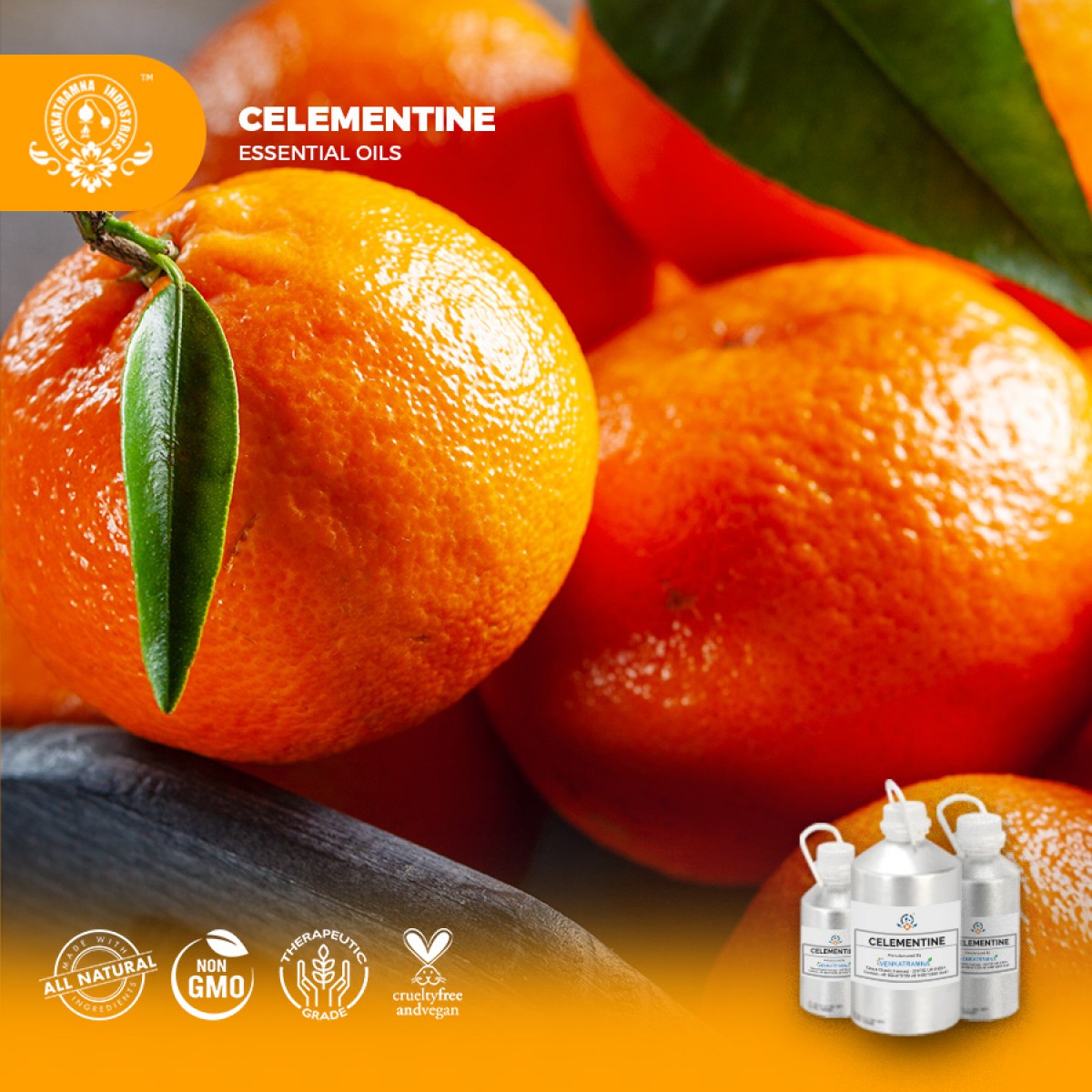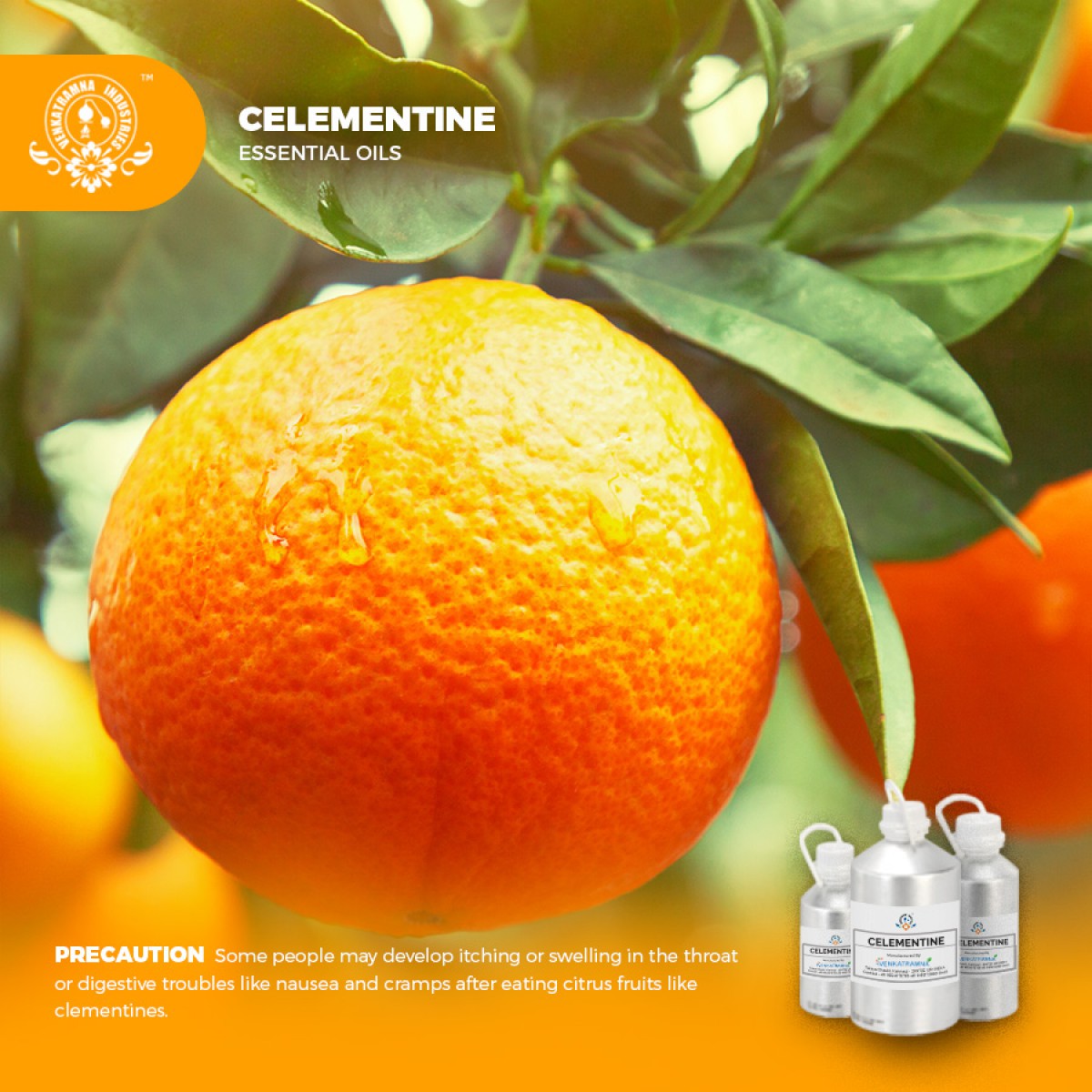Botanical Name : Citrus nobilis Common name: Tangor Plant family: Read More
|
Botanical Name : |
Citrus nobilis |
|
Common name: |
Tangor |
|
Plant family: |
Rutaceae |
|
Genus: |
Citrus |
|
Appearance/Color: |
A thin, clear, dark orange to reddish yellow or brownish
orange liquid |
|
Odor: |
A middle note of medium aroma, Clementine Essential Oil smells
identical to the fruit. |
|
Blends With: |
Other essential oils, particularly those from the citrus
and floral families |
|
Origin |
Italy |
Citrus fruits, which are cultivated worldwide, have been
recognized as some of the most high-consumption fruits in terms of energy,
nutrients and health supplements. What is more, a number of these fruits have
been used as traditional medicinal herbs to cure diseases in several Asian
countries. Numerous studies have focused on Citrus secondary
metabolites as well as bioactivities and have been intended to develop new
chemotherapeutic or complementary medicine in recent decades. Citrus-derived secondary metabolites, including
flavonoids, alkaloids, limonoids, coumarins, carotenoids, phenolic acids and
essential oils, are of vital importance to human health due to their active
properties. These characteristics include anti-oxidative, anti-inflammatory,
anti-cancer, as well as cardiovascular protective effects, neuroprotective
effects, etc. This review summarizes the global distribution and taxonomy,
numerous secondary metabolites and bioactivities of Citrus fruits to provide a reference for further
study. Flavonoids as characteristic bioactive metabolites in Citrus fruits are mainly introduced.
Oranges can be used in many ways
and almost all parts of it, including the peel, can be used. But most often
they are consumed without peel, fresh or in the form of juice.
Citrus fruits, which belong to the genus Citrus of the family Rutaceae, are of various forms and sizes (from round to oblong), commonly known as oranges, mandarins, limes, lemons, grapefruits and citrons. The sensory attributes of fruits (color, sweet taste, bitterness, and astringency) constitute decisive organoleptic and commercial properties. Citrus species are consumed mainly as fresh or raw materials for juices or are canned as segments. Additionally, Citrus fruits can also be used in the food, beverage, cosmetic and pharmaceutical industries as additives, spices, cosmetic ingredients and chemoprophylactic drugs, respectively.
DISCLAIMER
The complete range of conditions
or methods of use are beyond our control therefore we do not assume any
responsibility and expressly disclaim any liability for any use of this
product. Information contained herein is believed to be true and accurate however,
all statements or suggestions are made without warranty, expressed or implied,
regarding accuracy of the information, the hazards connected with the use of
the material or the results to be obtained from the use thereof. Compliance
with all applicable federal, state, and local laws and local regulations
remains the responsibility of the user.
The FDA has not evaluated the
statements on this website. No claims are made by Venkatramna Industries as to
the medicinal value of any products from vriaroma.com or by us. The information
presented here is for educating our customers about the traditional uses of
essential oils and is not intended to diagnose, treat, cure, or prevent any
disease. You are responsible for understanding the safe application of these products.
If you have any questions, please call or email us for further information.
As per NAHA guidelines, New Directions Aromatics (NDA) does not recommend the ingestion of essential oils. It is imperative to consult a medical practitioner before using Essential Oils for therapeutic purposes. Pregnant and nursing women and those taking prescription drugs are especially advised not to use this product without the medical advice of a physician. The oil should always be stored in an area that is inaccessible to children, especially those under the age of 7.
Citrus fruits are good sources of nutrition with an ample
amount of vitamin C. Besides, the fruits are abundant in other macronutrients,
including sugars, dietary fiber, potassium, folate, calcium, thiamin, niacin,
vitamin B6, phosphorus, magnesium, copper, riboflavin and pantothenic acid.
Celementine Oil in Pharma
It has several pharmacological
effects including antioxidant, cardioprotective, anti-proliferative, anticancer,
and hypolipidemic activities. In folk medicine, products derived from the peel
and/or whole dried immature fruit of orange plants have been used to treat
several health problems such as gastrointestinal disturbances, respiratory
disorders as agent for cough, insomnia, stress disorders, epilepsy, and
anxiety. C.
nobilis is a rich source of vitamin C, a natural antioxidant that
support the immune system activity.
Essence of Celementine Oil
It is used for food, fragrance, and medical application. Fruit, peel,
leaves, flowers, seeds, and essential oil (EO) are used in perfumes and
cosmetics, as well as in the food and confectionery industry. Bitter orange
oil, obtained from the pressure of the fresh peels, is widely used as a
flavoring agent in the food industry and for beverages, particularly liqueurs
and soft drinks.
COMMON USAGE
·
Skin care
·
Good for brain
·
Boost immunity
·
Strength bones and muscles
·
Aid digestion
·
Improves cardiovascular health
·
Electrolyte balance
·
Anticancer properties
Ingredients:
|
S.No |
Key Constituents |
Strength (%) |
|
1 |
(p)-limonene |
94.8-95.0% |
|
2 |
b-myrcene |
1.6-1.8% |
TOXICOLOGICAL
INFORMATION
Safety Summary
·
Hazardous: May cause Skin irritation
·
Contraindications Not Known
Systemic Effects
·
Acute toxicity (human) 1,8-cineole has
been reported to cause serious poisoning in young children when accidentally
instilled into the nose.
·
Acute toxicity (animal) cajuput oil acute
oral LD50 in rats 3.87 g/kg; acute dermal LD50 in rabbits>5 g/kg.
·
Carcinogenic/ anticarcinogenic: potential
no information found. 1,8-cineole is non-mutagenic and slows no evidence of
carcinogenesis.
·
Skin corrosion/irritation: May cause sensitization by skin
contact.
·
Serious eye damage/irritation: Spray and vapour in the eyes may
cause irritation and smarting.
·
Respiratory sensitization: In high concentrations, vapours may
irritate throat and respiratory system and cause coughing.
·
Reproductive toxicity: Not specified
·
STOT-single exposure: Not specified
·
STOT-related exposure: Not specified
·
Interactive effects Not specified
·
Aspiration Hazard: No Data Available
ECOLOGICAL
INFORMATION
·
Toxic
to aquatic organisms, may cause long term adverse effects in the aquatic
environment.
·
Results of PBT and vPvB assessment
o
PBT: Not applicable.
o
vPvB: Not applicable.
·
Persistence and degradability No further
relevant information available.
·
Bio-accumulative potential No further relevant
information available.
·
Mobility in soil No further relevant information
available.





 MSDS-Celementine.pdf
MSDS-Celementine.pdf




